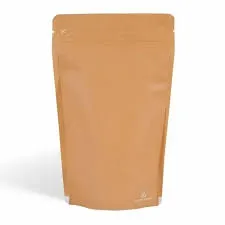- Afrikaans
- Albanian
- Amharic
- Arabic
- Armenian
- Azerbaijani
- Basque
- Belarusian
- Bengali
- Bosnian
- Bulgarian
- Catalan
- Cebuano
- chinese_simplified
- chinese_traditional
- Corsican
- Croatian
- Czech
- Danish
- Dutch
- English
- Esperanto
- Estonian
- Finnish
- French
- Frisian
- Galician
- Georgian
- German
- Greek
- Gujarati
- haitian_creole
- hausa
- hawaiian
- Hebrew
- Hindi
- Miao
- Hungarian
- Icelandic
- igbo
- Indonesian
- irish
- Italian
- Japanese
- Javanese
- Kannada
- kazakh
- Khmer
- Rwandese
- Korean
- Kurdish
- Kyrgyz
- Lao
- Latin
- Latvian
- Lithuanian
- Luxembourgish
- Macedonian
- Malgashi
- Malay
- Malayalam
- Maltese
- Maori
- Marathi
- Mongolian
- Myanmar
- Nepali
- Norwegian
- Norwegian
- Occitan
- Pashto
- Persian
- Polish
- Portuguese
- Punjabi
- Romanian
- Russian
- Samoan
- scottish-gaelic
- Serbian
- Sesotho
- Shona
- Sindhi
- Sinhala
- Slovak
- Slovenian
- Somali
- Spanish
- Sundanese
- Swahili
- Swedish
- Tagalog
- Tajik
- Tamil
- Tatar
- Telugu
- Thai
- Turkish
- Turkmen
- Ukrainian
- Urdu
- Uighur
- Uzbek
- Vietnamese
- Welsh
- Bantu
- Yiddish
- Yoruba
- Zulu
match a colour
Matching A Colour The Art and Science of Color Coordination
Color is one of the most powerful tools in human perception and communication. It influences our emotions, behaviors, and aesthetic preferences. Whether in fashion, interior design, or branding, the ability to match colors effectively is a crucial skill that can significantly impact the overall appeal and functionality of a design. In this article, we will explore the principles of color matching, the psychology behind it, and practical applications to enhance our daily lives.
The Basics of Color Theory
At its core, color theory provides a framework for understanding how colors interact with one another. The color wheel, a fundamental tool in this theory, organizes colors into a spectrum, illustrating the relationships between primary, secondary, and tertiary colors. Primary colors—red, blue, and yellow—cannot be created by mixing other colors. Secondary colors, like green, orange, and purple, are formed by combining primary colors. Tertiary colors are the result of mixing primary and secondary colors.
Understanding these relationships is essential for effective color matching. Complementary colors, which sit opposite each other on the color wheel, create a striking contrast when used together. Analogous colors, found next to each other, offer a harmonious look that is pleasing to the eye. Triadic schemes, which involve three colors evenly spaced around the wheel, can create a vibrant and balanced composition.
The Psychology of Color
Color matching is not just an aesthetic choice; it has psychological implications as well. Different colors evoke distinct feelings and associations. For instance, warm colors like red, orange, and yellow are often associated with energy, passion, and warmth. Conversely, cool colors such as blue, green, and purple tend to convey calmness, relaxation, and tranquility.
match a colour

In branding, companies carefully select colors to influence customer perceptions. For example, red is commonly used in food branding because it can stimulate appetite and excitement. Blue, on the other hand, is favored by tech companies to evoke feelings of trust and reliability. Understanding the psychology of color can help individuals and businesses make informed decisions about color matching that align with their goals.
Practical Applications of Color Matching
1. Fashion In the realm of fashion, matching colors effectively can enhance one’s personal style. A classic approach is to use a neutral base, such as black, white, or beige, and add pops of color through accessories. For instance, pairing a white dress with a bold red handbag creates a striking look. Similarly, layering shades of the same color can offer a chic monochromatic style that is elegant yet modern.
2. Interior Design Color matching plays a pivotal role in creating harmonious living spaces. Designers often start with a color palette that captures the mood they wish to convey. In a calming environment, soft blues and greens can be paired with earthy tones, creating a serene atmosphere. Accent colors can be introduced through furniture or decor, providing visual interest without overwhelming the space.
3. Branding and Marketing For businesses, color matching is essential in establishing brand identity. A cohesive color scheme across marketing materials, from logos to websites, reinforces brand recognition. Companies often conduct market research to understand their target audience's color preferences and emotional responses, tailoring their color choices accordingly to maximize impact.
Conclusion
In conclusion, the art of matching colors extends far beyond mere aesthetics; it encompasses psychology, emotion, and intention. Whether dressing for an occasion, designing a home, or building a brand, understanding the principles of color theory and the psychological implications of color can enhance our choices and elevate our creative expressions. The next time you choose a color palette, remember that color is a language of its own—one that can speak volumes about your personality, values, and aspirations. Embrace the art of color matching, and let it enrich your life and work in unexpected ways.













